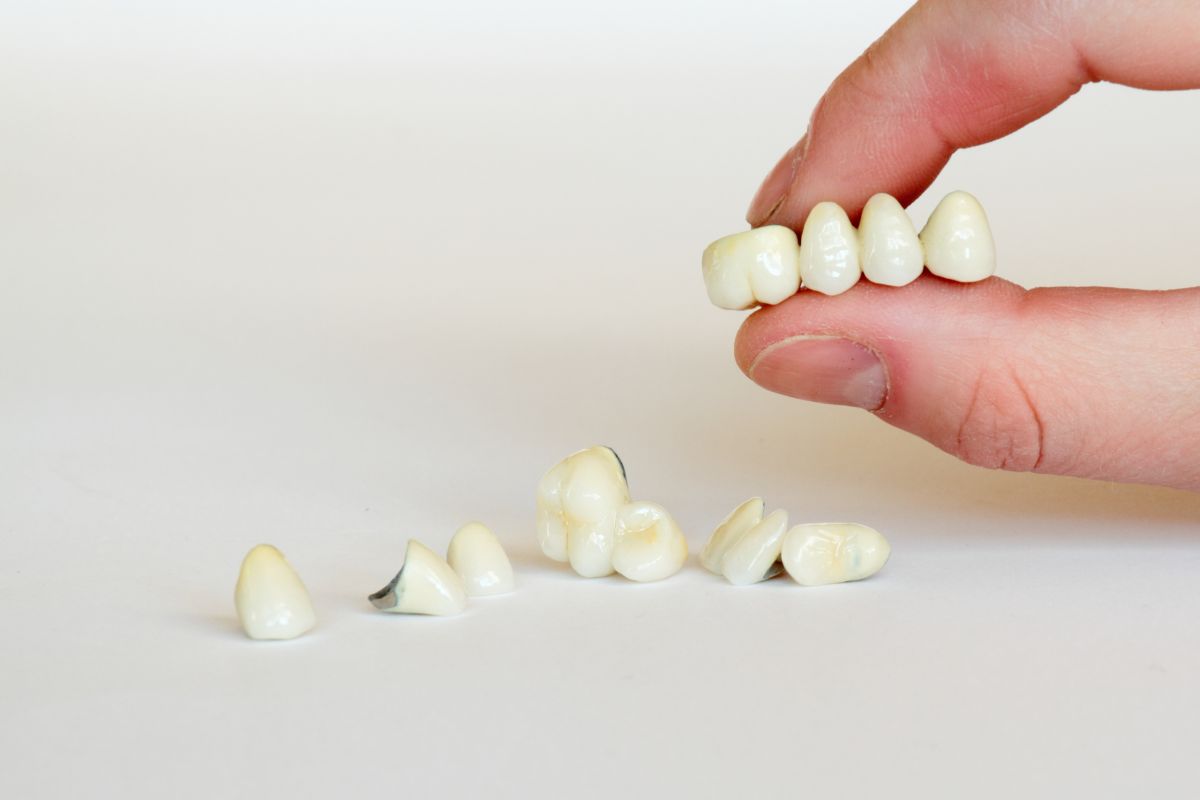Crown & Bridges
Missing teeth can be quite disheartening and cause a loss of function and confidence. However, dental procedures such as crowns and bridges can restore the strength and functions of the original teeth. Crowns and bridges imitate natural teeth in appearance, so no one can tell they are prosthetics while enhancing your appearance and confidence with a better smile.

What are Dental Crowns?
Dental crowns are tooth caps that cover the tooth to protect the filling and enhance functionality while restoring appearance. Depending on the patient's request and suitability, crowns can be made of porcelain, composite resin, metal, or ceramic. They are often used for severely decayed or broken teeth or after a root canal, where the affected tooth loses its functionality and needs strength.
What are Dental Bridges?
Dental bridges are structures to fill the gap created by one or more missing teeth. Bridges contain a crown for neighboring teeth and a prosthetic to replace the missing teeth. The adjacent teeth are prepared for the crown by drilling it to the desired shape and then placing the crowns on it, automatically placing the prosthetic in the desired place. Types of dental bridges available are traditional bridges, cantilever bridges, Maryland bridges, and implant-supported bridges. Bridges are recommended when one or more teeth are missing from the teeth line and must be replaced with prosthetics.
Benefits of Crowns and Bridges
Improved Appearance: Decayed, broken, or lost teeth can significantly affect their appearance. Crowns and bridges can restore the natural look of teeth.
Enhanced Functionality: Bad dental health can cause problems with eating and speaking. Crowns and bridges enhance these functions.
Durability and Strength: Crowns and Bridges are made from durable materials that can last a long time. Proper care and maintenance provide teeth with high strength and durability.
Preventing Teeth Shifting: Lost or broken teeth can cause the surrounding teeth to shift towards the space. Getting crowns or bridges as required can help avoid this shifting and keep your teeth aligned.
Caring for Crowns and Bridges
Crowns and bridges require equal care and maintenance as other dental procedures. Good oral hygiene, which includes brushing twice daily, flossing, and visiting the dentist regularly, is necessary. Also, food items prohibited by the dentist must be avoided to avoid damaging the prosthetics.
Sometimes, you may feel uncomfortable after the procedure. However, over-the-counter medicines prescribed by your dentist can help manage this.
Addressing Common Concerns
The lifespan of Crowns and Bridges: The lifespan of crowns and bridges can be 5 to 15 years but vary depending on your lifestyle, oral hygiene, and overall maintenance. However, regular dental checkups can help increase their lifespan and promote oral health.
Possible Complications: While crowns and bridges are highly durable, they can sometimes become loose or fall out for various reasons. In such cases, contact your dentist to have them fixed.
Frequently Asked Questions (FAQs)
Depending on the material of crowns and bridges, they can last anywhere from 5 to 15 years. It is also affected by the quality of hygiene and maintenance.
The procedure is not painful. However, local anesthesia prevents the slight discomfort caused during it, and dentist-prescribed pain relievers relieve any possible pain after it.
If your crown or bridge feels loose, avoid chewing on the affected side until you see a dentist to get it fixed. Chewing on the affected side may cause further inconvenience.

